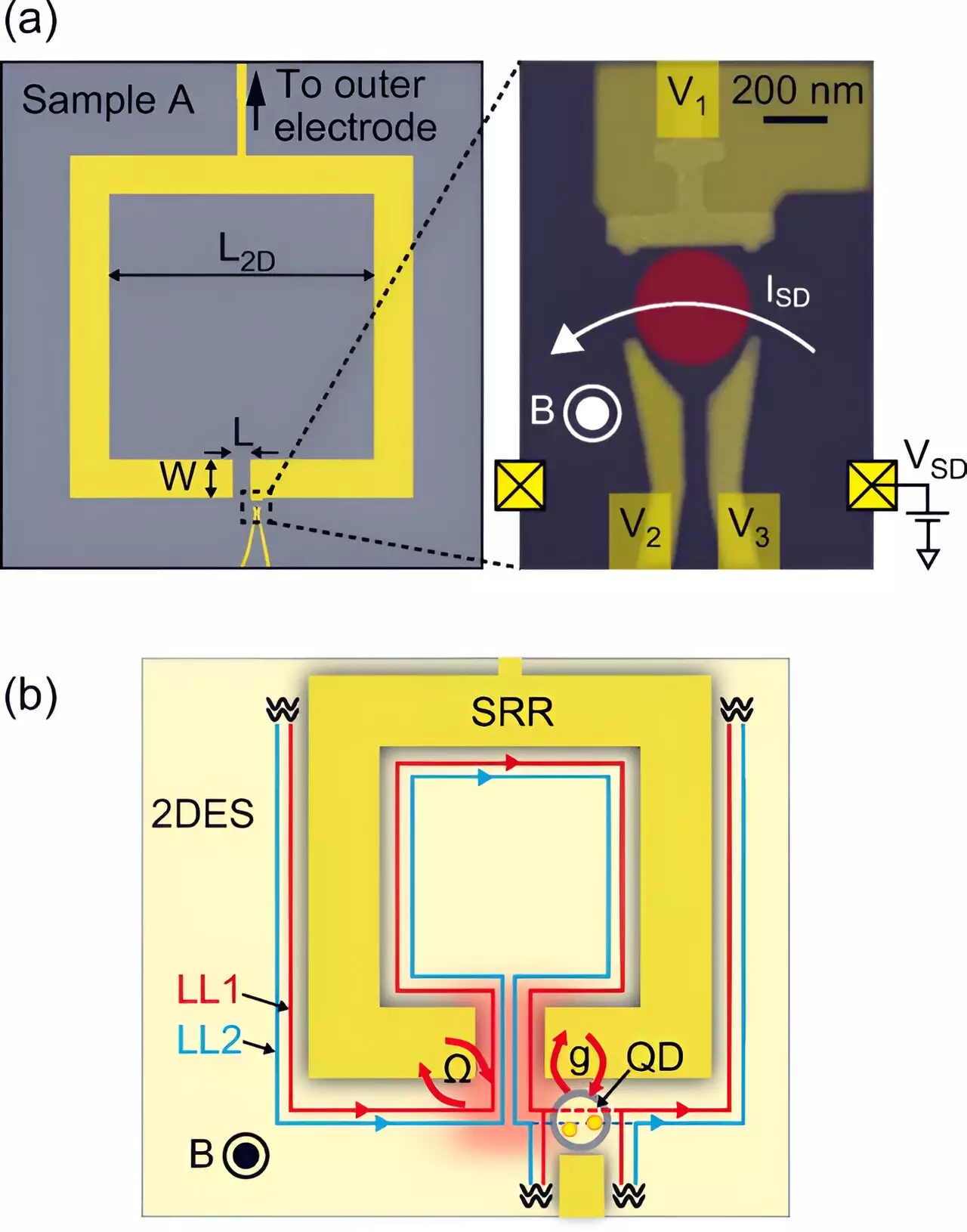The future of electronics is rapidly evolving and will soon differ significantly from conventional electronics. The storage and transmission of information in future quantum electronics will be based on qubits instead of traditional binary digits. However, one of the key challenges in quantum electronics has been the limited ability to transmit quantum information over long distances. In a recent study published in Physical Review Letters, researchers from the Institute of Industrial Science at the University of Tokyo have made significant progress in addressing this issue. Their new technology allows for the transmission of quantum information over tens to a hundred micrometers, which has the potential to greatly enhance the functionality of future quantum electronics.
The central question that the researchers sought to answer was how to transmit quantum information from one quantum dot to another on the same quantum computer chip. One potential approach is to convert matter information, specifically electron information, into electromagnetic wave information by generating light-matter hybrid states. However, previous attempts at achieving high-speed quantum information transmission were incompatible with the requirements of quantum information processing. The research team aimed to develop a solution that improves transmission efficiency, provides flexibility in design, and is compatible with existing semiconductor fabrication tools.
Coupling Quantum Dots and Terahertz Split-Ring Resonator
The researchers present a novel approach to transmit quantum information by coupling a few electrons in the quantum dot to an electrical circuit called a terahertz split-ring resonator. The simplicity of this design makes it ideal for large-scale integration and is compatible with advanced nanotechnology commonly used in semiconductor manufacturing. In contrast to previous methods that relied on an ensemble of thousands to tens of thousands of electrons, the present system confines only a few electrons. This smaller scale is well-suited for quantum information processing while still maintaining comparable coupling strength to larger ensemble systems. The researchers’ work leverages the widespread use of these structures in semiconductor manufacturing to address a practical challenge in quantum information transmission.
The development of this new technology is a significant milestone in the field of quantum information transmission. It overcomes a longstanding limitation in laboratory findings, opening up new possibilities for practical applications. Moreover, the ability to convert between light and matter is a fundamental architecture for the future of large-scale quantum computers based on quantum dots. The researchers’ use of common materials and manufacturing processes in semiconductors paves the way for straightforward implementation of their findings.
The recent advancements made by researchers from the University of Tokyo in transmitting quantum information are poised to revolutionize the field of quantum electronics. The development of a new technology that enables the transmission of quantum information over tens to a hundred micrometers provides a crucial breakthrough in the design and functionality of future quantum electronics. By coupling a few electrons in a quantum dot with a terahertz split-ring resonator, the researchers have created a system that is compatible with existing semiconductor fabrication tools. The practical implications of this work are enormous, and it is an important step towards the realization of large-scale quantum computers.


Leave a Reply